Applications
Detecting modifications to painted or finished surfaces
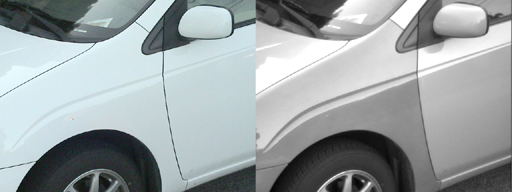
This Toyota Prius has has it fender repainted. The new paint appears darker than the older, more weathered paint in the UV image, although it is impossible to detect the difference visually.
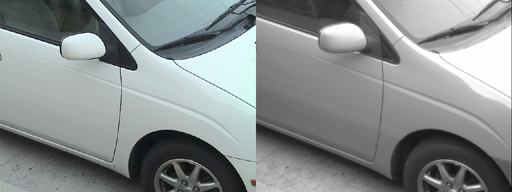
We imaged the other undamaged front fender of the Prius to show that the driver's side fender was actually repainted, and that it wasn't just a difference in the lighting.
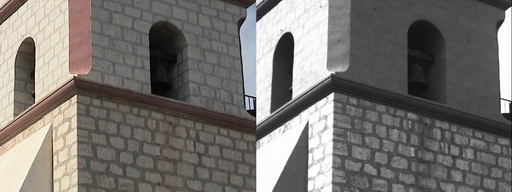
The Santa Barbara Mission has solid concrete bell towers which have artificial stone and mortar patterns skillfully painted on. Notice the contrast between the real mortar lines and the artificial. One can also see the water stain more clearly in the UV image.

Repainted exterior stucco. Left-Visible, Right-UV
Fresh paint has a different appearance relative to aged paint, though they may look identical to the eye. Fluorescence examination can sometimes
detect these differences, but only if the paint has some fluorescent component to it, and then only in very low ambient light. The areas that appear darker in the UV image were slightly fluorescing when illuminated by 365nm light after dark, but the fluorescent signal was very
weak, as is the case with many materials.
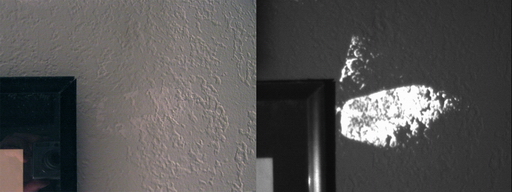
Painted plaster wall with fresh spackle repairs. Left-Visible, Right-UV
Spackle is more reflective in the UV than regular paint. You can use UV imaging to detect modifications to a wall's surface.
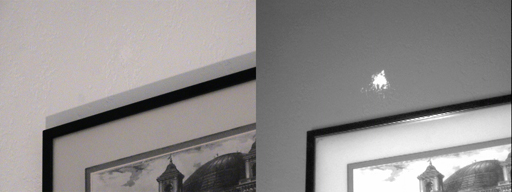
Painted plaster wall with fresh spackle repairs. Left-Visible, Right-UV
Home inspectors can use the UVCorder to quickly determine if painted walls have been modified. They can also document the changes easily, since the UV record shows much more contrast than the visible record of the modification.

This sign has a scratch in it made by a box cutter. Note the scratch is much easier to see in the UV record. The large font letters were painted with a dark purple paint that is (perhaps not suprisingly) more reflective in the UV than in the visible.
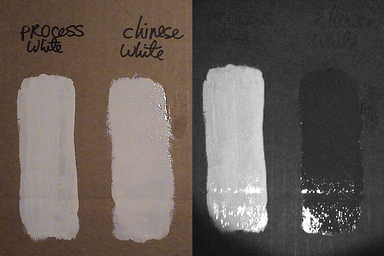
Process White is the left stripe of paint. It is a watercolor that accurately reproduces in photographs. It is very reflective to UV light at 365nm wavelength, unlike Chinese White. Neither paint exhibits fluorescence, so the reflected UV imaging technique may be a better method for distinguishing various non-fluorescing pigments.
|


